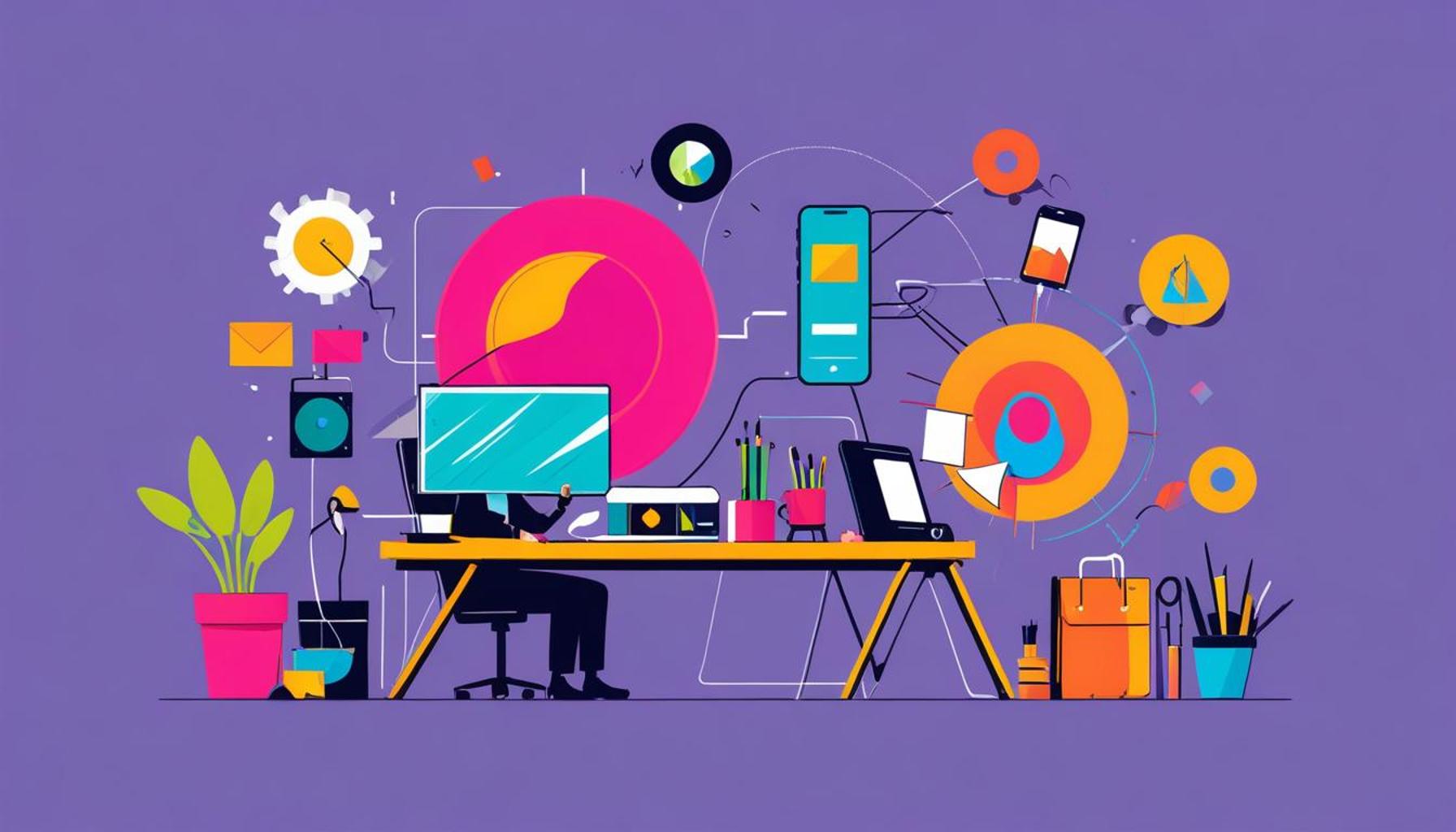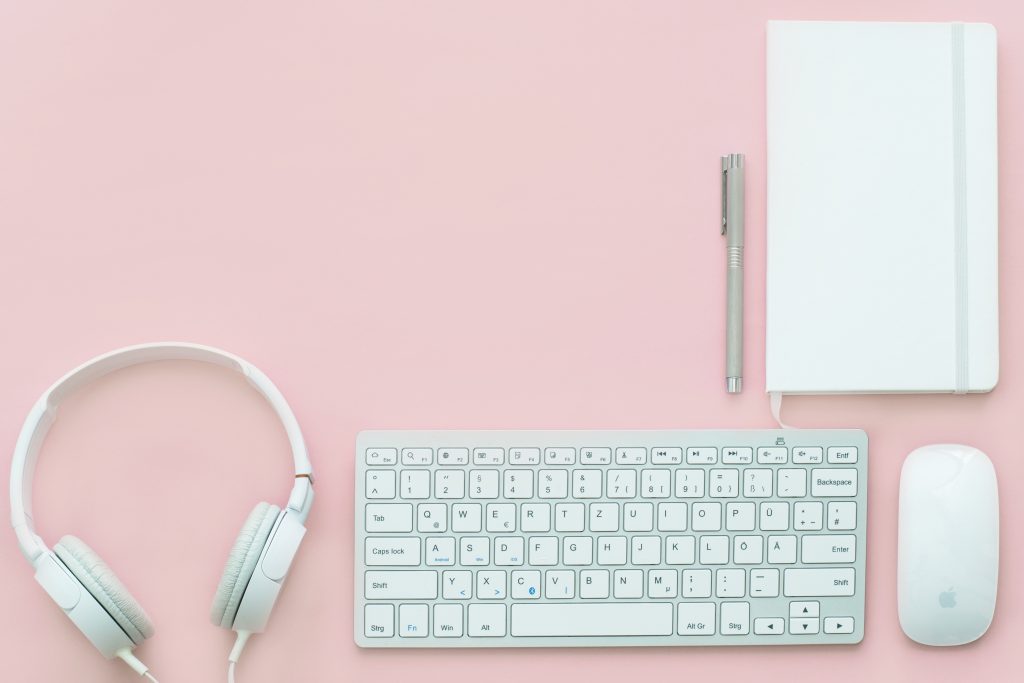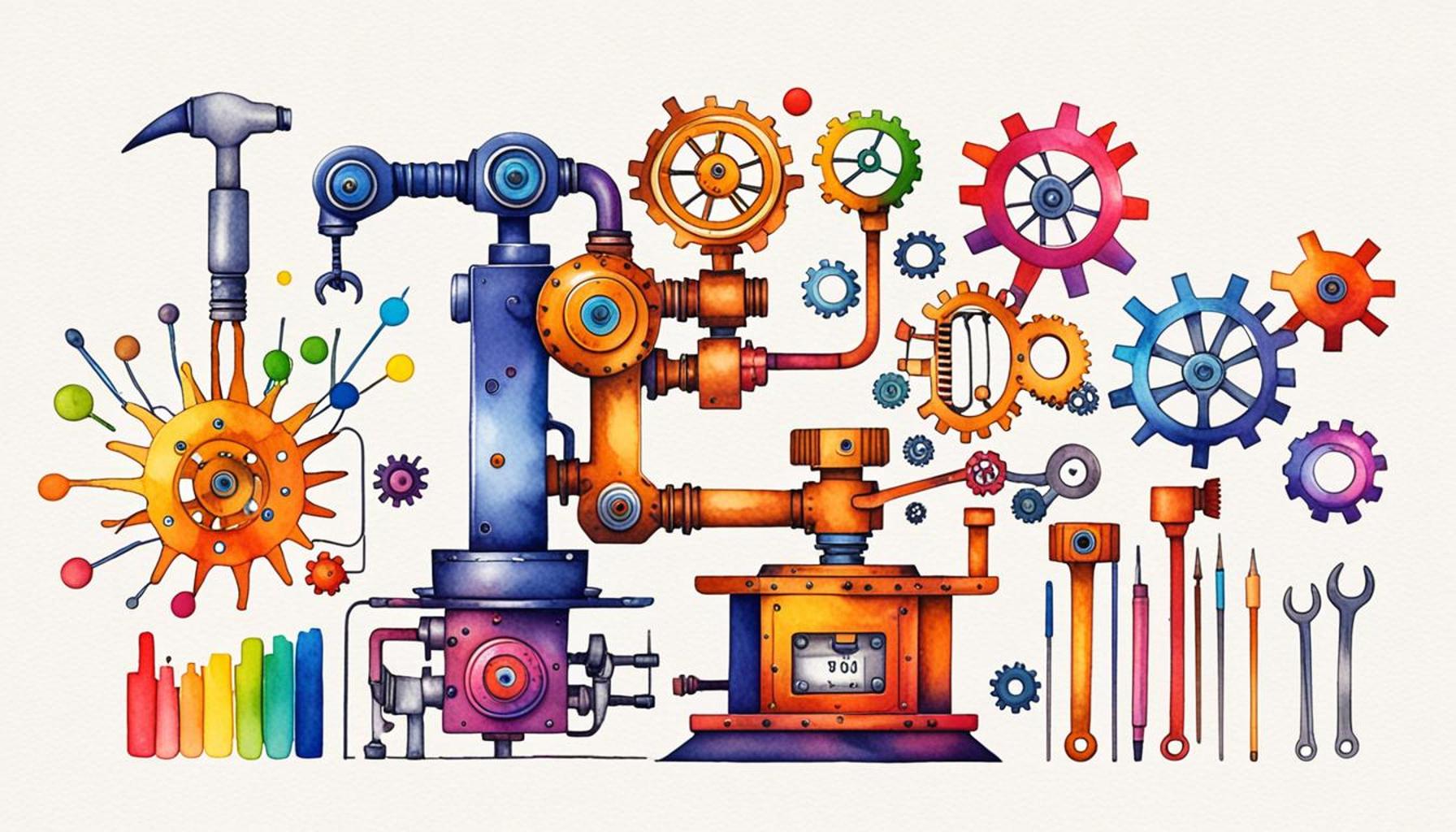The Influence of Digital Minimalism on Productivity: How to Eliminate Distractions and Focus on the Essentials

The Influence of Digital Minimalism on Productivity
Amid the relentless pace of modern life, distractions from social media notifications, endless emails, and a barrage of online content can make focusing on crucial tasks feel nearly impossible. This is where digital minimalism steps in, offering a powerful framework for cutting through the noise. By consciously decluttering our digital environments, we can sharpen our attention and maximize our productivity.
At the heart of digital minimalism are its key features that redefine how we interact with technology:
- Reduction of Digital Clutter: Just as a tidy workspace can lead to clearer thinking, so too can a streamlined digital space. For example, removing unused applications from smartphones and organizing emails into clearly defined folders can reduce the mental load associated with constant digital engagement. Studies indicate that when we have fewer digital distractions, our cognitive capacity to concentrate on important tasks increases.
- Intentional Technology Use: Digital minimalism encourages engaging with technology only when necessary. This might mean reserving specific times for checking emails or social media, rather than allowing notifications to interrupt your workflow. Schedule blocks of time dedicated solely to deep work without outside interruption, leading to improved completion rates for tasks and higher overall performance.
- Mindful Consumption: Curating the types of content we consume and the interactions we engage in online can reclaim significant portions of our mental bandwidth. For instance, unfollowing accounts that don’t bring value and subscribing only to newsletters that genuinely enrich our knowledge can mitigate the overwhelming sense of information overload that many experience today.
The core principle of this movement is clear: by eliminating distractions, we cultivate an environment conducive to deeper focus on the activities that matter most. According to a report from the University of California, Irvine, workers who experience frequent interruptions take an average of 23 minutes to regain focus after an interruption. This startling statistic highlights the urgency of adopting strategies to minimize distractions in our increasingly digital lives.
As we explore the practical applications of digital minimalism, consider how implementing these principles can transform productivity in both personal and professional spheres. Embracing a minimalist approach not only makes daily tasks more manageable but also encourages a healthier relationship with technology, resulting in a more peaceful and productive mindset.

In conclusion, adopting the philosophy of digital minimalism can fundamentally reshape how we navigate our digital landscapes. By prioritizing what is essential, we can open doors to greater creativity and improved performance, ultimately benefitting both ourselves and our communities in this age of digital saturation.
DISCOVER MORE: Click here for advanced decluttering techniques
Unlocking Potential through Digital Minimalism
In an era dominated by screens, the ability to zone in on our most important tasks has become paramount. An American Psychological Association study reveals that 1 in 4 Americans feel overwhelmed by the barrage of digital notifications they receive each day. The practical application of digital minimalism acts as a remedy to this struggle, helping individuals reclaim their attention and improve productivity in an increasingly distracting world.
Implementing the principles of digital minimalism involves several actionable strategies that can yield remarkable results. By incorporating these methods into daily routines, people can cultivate a more focused approach to both personal and professional tasks:
- Set Clear Boundaries: Establishing work-life boundaries in the digital realm is essential. This may involve defining specific periods where devices are put away, allowing for uninterrupted time to focus on important projects. As research shows, people who have clear boundaries between personal and professional time are less likely to feel overwhelmed and more capable of maintaining high levels of productivity.
- Utilize Productivity Tools Wisely: While technology offers various tools to enhance productivity, over-reliance can backfire. Select tools that align with specific goals, like using project management software to track deadlines or habit trackers to monitor progress. By focusing on only a select few tools, individuals create a more streamlined and effective approach to managing tasks.
- Practice Digital Detox: Taking periodic breaks from technology can reinvigorate creativity and enhance focus. Scheduling regular digital detoxes—whether it’s an entire weekend or just an evening—fosters reflection and allows individuals to reconnect with their surroundings, ultimately enhancing their output when they return to work.
- Incorporate Deep Work Sessions: Inspired by Cal Newport’s concept of “deep work,” practicing focused, uninterrupted work sessions can significantly boost productivity. These sessions, typically ranging from 60 to 90 minutes, allow individuals to immerse themselves fully in complex tasks without distractions, leading to higher-quality work and faster completion rates.
With the average American adult spending over 11 hours a day engaging with digital media, it is clear that managing this engagement is vital for maintaining focus. Digital minimalism invites individuals to adopt an intentional approach to their digital habits, enabling them to reclaim their time and attention. When distractions are curtailed, cognitive resources are freed up for deep thinking, creativity, and effective problem-solving—qualities that are invaluable in today’s competitive landscape.
Moreover, the mental health benefits of adopting a minimalist mindset should not be overlooked. A cluttered digital environment has been associated with increased stress and anxiety levels, as people feel overwhelmed by the constant barrage of information. By simplifying their online experiences, individuals can cultivate a clearer state of mind, paving the way for enhanced creativity and productivity in their daily lives.
In summary, as we dive deeper into the practical applications of digital minimalism, it becomes evident that it’s not just about reducing distractions; it’s a comprehensive strategy for optimizing productivity and enhancing well-being. By embracing these strategies, we can transform how we interact with technology, allowing us to focus on essentials that truly matter.
The Influence of Digital Minimalism on Productivity
Digital minimalism is not just a trend; it’s a powerful philosophy that encourages individuals to streamline their digital lives to maximize productivity. By adopting a minimalist approach, you eliminate unnecessary distractions, allowing you to focus on what truly matters. The practice goes beyond simply reducing your digital footprint; it involves a comprehensive strategy to enhance concentration and efficiency.
Understanding Digital Distractions
In our hyper-connected world, distractions lurk at every turn—be it social media notifications, endless email chains, or the compulsion to check the latest news updates. These interruptions can dramatically reduce your productivity, making it essential to understand how they affect your work. Studies show that it takes an average of 23 minutes to regain focus after a distraction, significantly impacting your performance over time. Implementing digital minimalism tactics allows you to reclaim that lost focus and channel your energy into essential tasks.
Practical Strategies for Digital Minimalism
There are several actionable strategies you can adopt to embrace digital minimalism. Start by conducting a detailed audit of your digital tools and platforms. Assess which applications and services genuinely contribute to your productivity and which ones merely serve as interruptions. Consider batching tasks and scheduled time blocks for checking emails or social media, rather than allowing them to interrupt your creative flow haphazardly. Moreover, setting aside dedicated distraction-free periods free from digital interference can significantly amplify your focus on core responsibilities.
Long-Term Benefits
Embracing digital minimalism yields long-term benefits that extend beyond immediate productivity gains. With less clutter in your digital space, you’ll experience reduced stress levels, increased clarity in decision-making, and better overall well-being. You become more intentional about your digital habits, fostering a healthier relationship with technology while enhancing your capacity to focus on what is essential in your professional and personal life. By narrowing your focus, you not only improve productivity but also craft a more fulfilling experience as you engage deeply with the tasks that matter most.
| Category | Reasons |
|---|---|
| Enhanced Focus | Eliminates distractions, allowing deep work and creativity to flourish. |
| Improved Stress Management | Decreases overwhelm by simplifying choices and improving mental clarity. |
By exploring and incorporating these principles into your daily routine, you’ll find yourself not only more productive but also more satisfied with your daily achievements. In the age of information overload, digital minimalism emerges as a beacon for those seeking meaningful engagement with their work and life.
DIVE DEEPER: Click here to discover space-saving garden designs
Harnessing Focus through Intentional Technology Use
As the quest for productivity intensifies, the role of intentional technology use becomes increasingly crucial. Digital minimalism encourages individuals to critically assess their digital interactions, ensuring that each engagement contributes meaningfully to their overarching goals. This reflective approach is not merely about withdrawing from technology; rather, it’s about engaging with it in a more purposeful manner.
One effective way to embrace this intentional use is through the concept of the “digital garden.” Coined by tech enthusiasts, a digital garden symbolizes a space free from the frenetic pace of social media and constant notifications. Instead, it fosters an environment where ideas can grow organically. Tools like Notion or Roam Research enable users to cultivate notes and thoughts in a structured format that can evolve over time. This personalized approach not only enhances productivity by reducing cognitive overload but also ignites creativity by providing a platform for reflection and exploration.
Additionally, time-blocking is another powerful strategy that aligns seamlessly with digital minimalism. This technique involves breaking the workday into dedicated blocks for specific tasks, allowing individuals to align their focus with their goals. A recent report from the Productivity Institute found that professionals who employed time-blocking saw a 25% increase in their performance and mental clarity. By segmenting tasks and eliminating the temptation to multi-task, individuals can create a work rhythm conducive to deep concentration.
Another dimension of enhancing productivity through digital minimalism involves the practice of curating information consumption. With an overwhelming influx of articles, podcasts, and videos vying for attention, it is essential for individuals to choose wisely. Engaging with high-quality, relevant content rather than consuming everything in sight not only reduces noise but also allows for deeper, more meaningful engagement with the material. Tools such as Feedly or Pocket help users create tailored content feeds, cutting through the clutter and ensuring their time is spent on the most impactful information.
Furthermore, the importance of digital mindfulness cannot be overstated. Just as one would practice mindfulness in meditation, incorporating mindful moments into the digital experience can lead to remarkable changes in productivity. Taking time to pause and assess one’s digital habits can reveal patterns or habits that detract from efficiency. Findings from a Harvard study indicate that practicing mindfulness boosts cognitive flexibility, which facilitates better decision-making and focus.
Anecdotal evidence supports these strategies, as numerous individuals report transformative shifts in their personal and professional lives. For instance, after committing to digital minimalism, many users on platforms like Twitter or LinkedIn have described reductions in stress levels and increased time for impactful projects. By consciously simplifying their digital spaces and minimizing distractions, they’ve reclaimed energy and creativity that fuels innovation.
In today’s fast-paced environment, the integration of digital minimalism not only safeguards cognitive resources but also propels individuals toward achieving their essential goals. As people continue to navigate the complexities of modern technology, the intentional alignment of digital habits with productivity objectives fosters a healthier, more focused approach to work and life.
DISCOVER MORE: Click here to learn how decluttering boosts your productivity
Conclusion: Embracing Digital Minimalism for Enhanced Productivity
In an era where distractions are rife and attention spans are dwindling, digital minimalism emerges as a beacon of clarity, enabling individuals to reclaim focus and enhance productivity. By advocating for a more intentional engagement with technology, digital minimalism not only reduces cognitive overload but also empowers users to align their digital habits with personal and professional goals.
The transformative practices of time-blocking, curating content consumption, and embracing digital mindfulness form the foundation of this movement. These strategies ensure that each moment spent online is purposeful, fostering an environment conducive to creativity and high-quality work. The concept of the digital garden illustrates a nurturing approach to technology that encourages organic growth and reflection, allowing ideas to flourish without the encumbrance of constant notifications.
As demonstrated through various anecdotal accounts and studies, the impact of digital minimalism on stress reduction and productivity gains cannot be overstated. Professionals who have embraced these principles report heightened mental clarity and increased time for essential tasks, ultimately leading to a more fulfilling work-life balance. It invites individuals to not just participate in the digital age, but to thrive within it by facilitating meaningful connections with technology.
As we face an increasingly complex digital landscape, the adoption of digital minimalism serves as a powerful antidote to distraction, making it crucial for anyone looking to optimize their productivity. By prioritizing what truly matters and eliminating unnecessary noise, individuals can cultivate a focused mindset that drives innovation, creativity, and success. In this way, digital minimalism is not just a strategy for survival—it is a pathway to achieving one’s highest potential.



